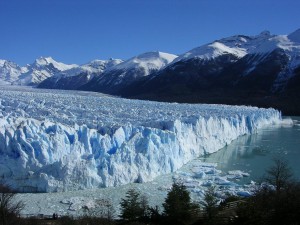Karakorum and Himalayan Glaciers comparatively safer from impact of Global Warming: Latest study reveals
Monday, February 13th, 2012 2:45:43 by Naveed A Bari
Karakorum and Himalayan Glaciers comparatively safer from impact of Global Warming: Latest study reveals
Latest studies conducted by the researchers at University of Colorado’s Institute of Arctic and Alpine Research, have now revealed that the glaciers around the world are melting with ten times lesser rate as were previously thought.
Scientists, however, still strongly believe that the effect of Global Warming on the fresh water power houses is still huge and is severely affecting them at the moment.
The research has come as a breath of fresh air for the environmental activists around the world. The data was collected over a period of seven years through the satellite images collected over this period.
“The good news is that the glaciers are not losing mass as fast as we thought,” said Tad Pfeffer, a professor at the University of Colorado’s Institute of Arctic and Alpine Research and a co-author of the study. “The bad news is that they are still losing
a lot of water. There is still definitely a serious problem for the Himalayas.”
According to the previous estimates, which have now been rendered false, the glaciers in Antarctica and Green Land were melting at a rapid pace, increasing the sea levels around the world. Also feared, was the effect of water expansion caused by the rising
temperatures.
The Ice mass in these two places, Which hold the biggest supply of fresh water on earth, from 2003 through 2010, they collectively lost about 4,200 cubic kilometers (1,000 cubic miles), enough to raise sea levels by 12 millimeters (a half-inch) over that
eight year period, the study found.
Pfeffer also disclosed that the rate of melting of the Himalayan Glaciers is much lower than the polar caps and are likely to stay in the present shape and form for another 100 years, provided the rate of Global warming increase with the current predicted
calculations.
“For high-mountain Asia, we are reporting loss of only four gigatonnes (Gt), or four cubic kilometres, annually,” said Pfeffer.
Satellite data used in the study, published in Nature, was taken from the Gravity Recovery and Climate Experiment, or GRACE, a joint NASA-German effort to measure changes in the planet’s gravity field.
“A better estimate of past behaviour, such as that obtained [in the new study], will therefore result in better estimates of future behaviour,” Jonathan Bamber, a professor at the University of Bristol, noted in a commentary, also in Nature.
More than one billion people living in South Asia are directly dependant on the supply of fresh water from the Himalayan Glaciers as the major chunk of the population is dependent on intensive subsistence farming. The glaciers also play a vital role in regulating
the weather and temperatures variations in the region.
Short URL: https://www.newspakistan.pk/?p=12522

















